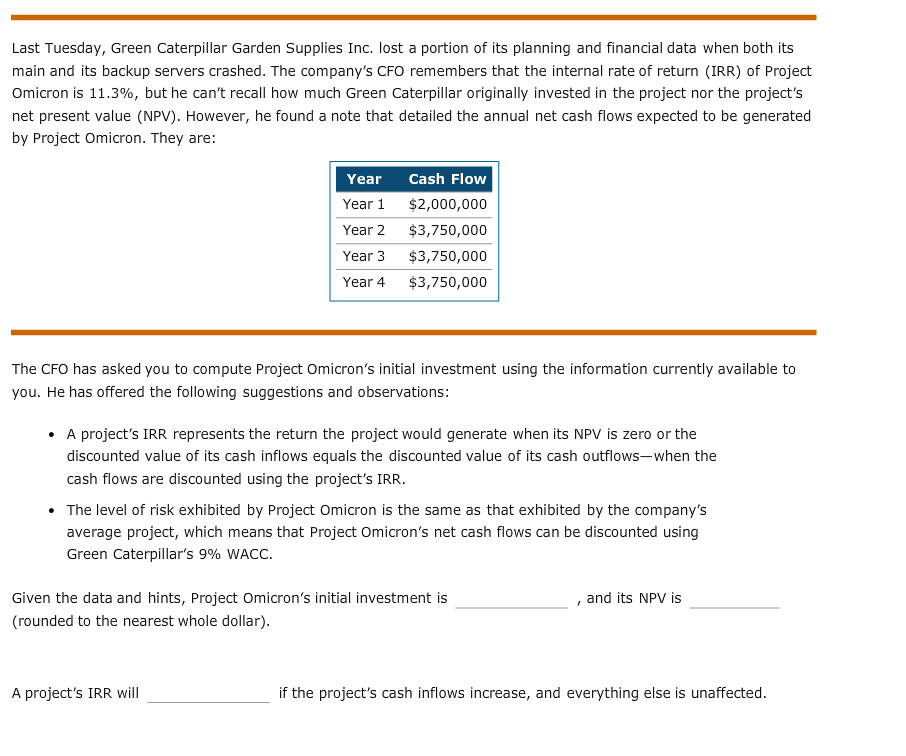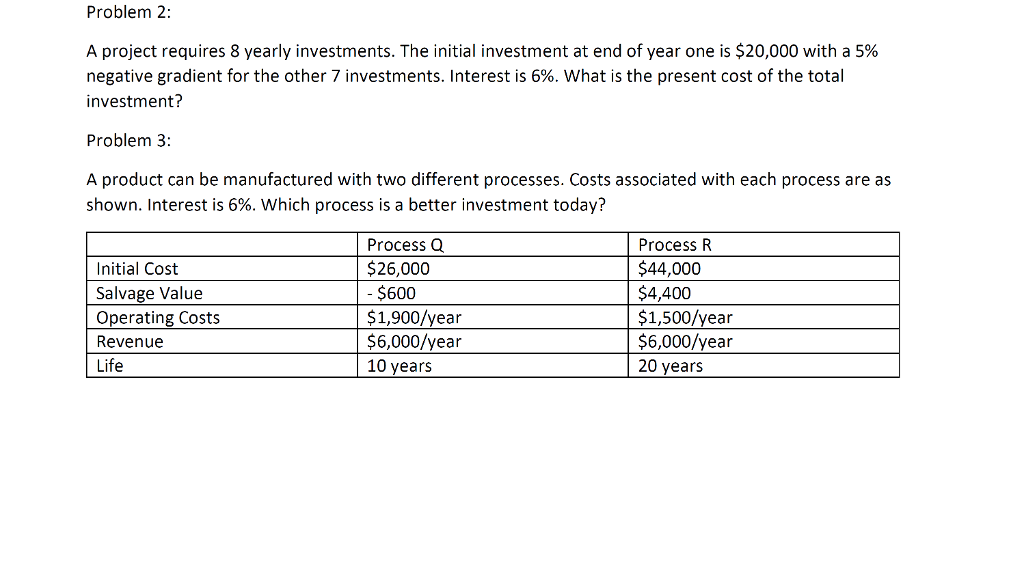
It gives the number of years it takes to break even from undertaking the initial expenditure. During the capital budgeting process, the attractiveness of a project is evaluated based on the cash flows generated by the project over its life. In order to build new plants, buy new equipment , develop new products, and upgrade information technology, businesses have to have money or capital. Login Newsletters. Definition Formula Example Join Discussions.
Initial investment is the amount required to start a business or a project. It is also called initial investment outlay or simply initial outlay. It equals capital expenditures plus working capital requirement plus after-tax proceeds from assets disposed off or project initial investment for use. Capital budgeting decisions involve careful estimation of the initial investment outlay and future cash flows of a project. Correct estimation of these inputs helps in taking decisions that increase shareholders wealth. Initial investment equals the amount needed for capital invwstment, such as machinery, tools, shipment and installation.

Chapter 6 — Investment decisions — Capital budgeting Chapter objectives Structure of the chapter Capital budgeting versus current expenditures The classification of investment projects The economic evaluation of investment proposals Net present value vs internal rate of return Allowing for inflation Key terms Capital budgeting is vital in marketing decisions. Decisions on investment, which take time to mature, have to be based on the returns which that investment will make. Unless the project is for social reasons only, if the investment is unprofitable in the long run, it is unwise to invest in it now. Often, it would be good to know what the present value of the future investment is, or how long it will take to mature give returns. It could be much more profitable putting the planned investment money in the bank and earning interest, or investing in an alternative project.
Initial cash flow is the amount of money paid out or received at the start of a project or investment. This is generally a negative amount because projects often require a large initial capital investment by a company at the outset of a project that will generate positive cash flow over time. This project initial investment cash flow is factored into the profitability of a project during the discounted cash flow analysis that is used to evaluate whether or not undertaking the project is profitable.
Initial cash flow can also be called initial investment outlay. During the capital budgeting process, the attractiveness of a project is evaluated based on the cash flows generated by the project over its life. Using discounted cash flow analysis, the project’s future value of the cash flows over its life is brought back to the present value to determine whether it is worthwhile for the company to pursue the project.
Because the initial outlay is made at the start of the project time zeroit isn’t discounted. It is very important to use experts who are skilled at estimating a project’s expected cash flows, as errors in cash flow or discount rate estimation can result in a company undertaking an unprofitable project. This is then evaluated along with the future cash flows the project will generate over its life. Financial Ratios. Financial Analysis.
Tools for Fundamental Analysis. Corporate Finance. Your Money. Personal Finance. Your Practice. Popular Courses. Login Newsletters. What Is Initial Cash Flow? Compare Investment Accounts. The offers that appear in this table are from partnerships from which Investopedia receives compensation.
Related Terms Conventional Cash Flow Conventional cash flow is a series of inward and outward cash flows over time in which there is only one change in the cash flow direction. Profitability Index The profitability index is a technique used to measure a proposed project’s costs and benefits by dividing the projected capital inflow by the investment. Understanding Discounted Payback Periods The discounted payback period is a capital budgeting procedure used to determine the profitability of a project.
It gives the number of years it takes to break even from undertaking the initial expenditure. What Is Capital Budgeting? Capital budgeting is a process a business project initial investment to evaluate potential major projects or investments. It allows a comparison of estimated costs versus rewards. Partner Links. Related Articles. Financial Analysis How do you use discounted cash flow to calculate a capital budget?
Initial Investment
Related Articles. Sunk costs are ignored because they are irrelevant. Initial investment is the amount required to start a business or a project. Find the initial investment outlay. The cost of capital is also called the hurdle project initial investment. Corporate Finance. Should very small businesses even worry about their cost of capital? Let’s connect! Cost of capital is the cost of obtaining that money or financing for the small business. Your Practice. The cost of capital is simply the rent, or interest rateit costs the business to obtain financing. This is then evaluated along with the future cash flows the project will generate over its life. Capital is the money businesses use for financing their operations. During the capital budgeting process, the attractiveness of a project is evaluated based on the cash flows generated by the project over its life. For larger businesses, capital may be the supplier credit and longer-term debt or liabilities, which are the firm’s liabilities. Related Project initial investment Conventional Cash Flow Conventional cash flow is a series of inward and outward cash flows over time in which there is only one change in the cash flow direction.

Comments
Post a Comment